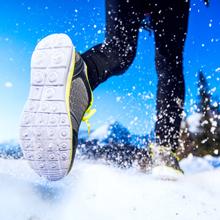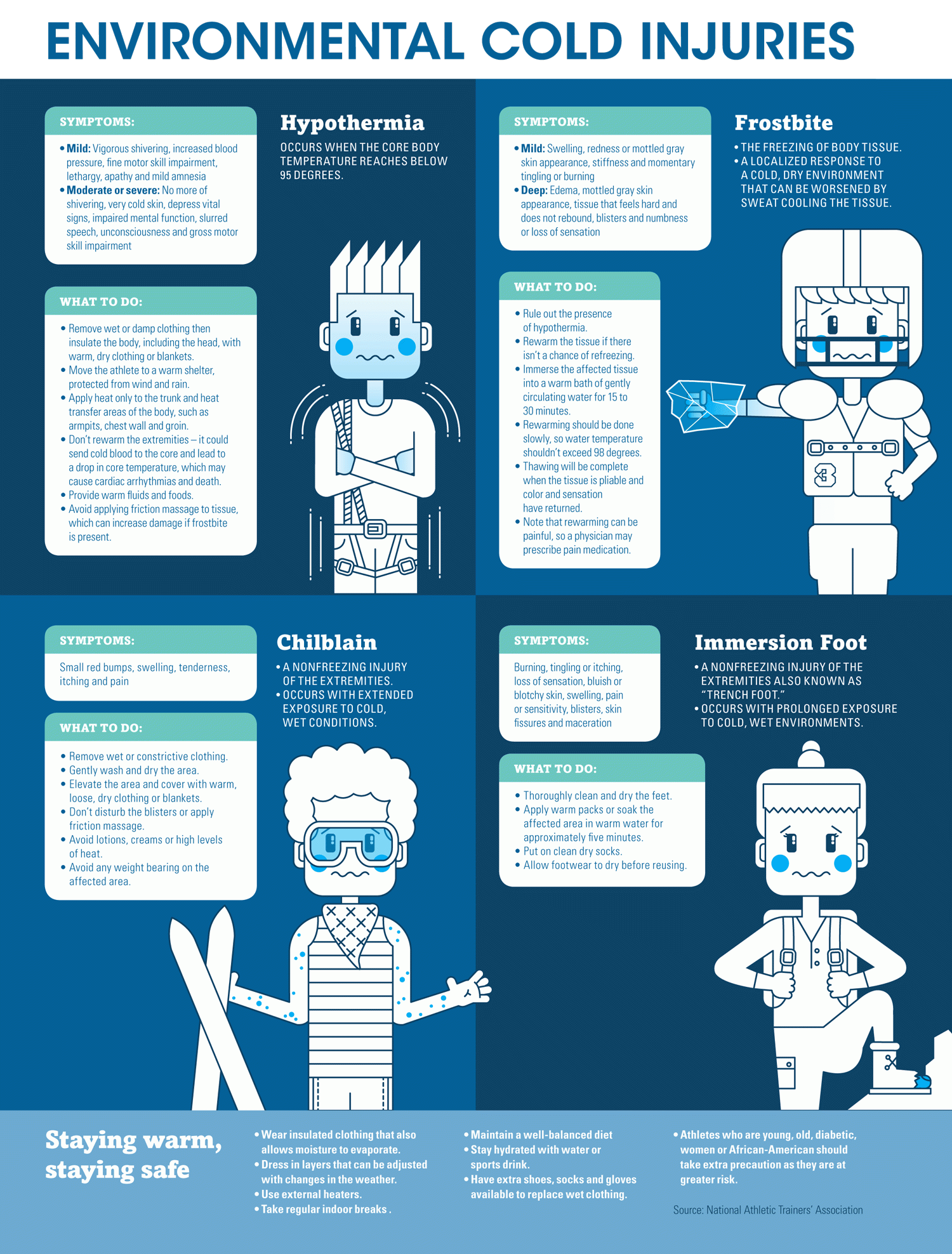
The winter comes with its own challenges for athletes. The thought of running on a treadmill or training indoors is less appealing than the workouts themselves. Instead, we often choose to endure 45 minutes of freezing our "you know what" off. Is that safe? When is it too cold to train safely outside? Here’s what you need to know about cold weather injuries and SAFELY training in cold weather.
Prevention:
The thing to remember about cold weather injuries is THEY ARE TOTALLY PREVENTABLE! The main way an athlete can prevent injury is being properly clothed. Training outside shirtless is not tough it is DANGEROUS! Push the ego aside and use these quick tips for clothing:
-
Begin with wicking fabric on skin (polypropylene or wool). These fabrics prevent moisture absorption and allows evaporation.
-
Add an insulation layer (sweatshirt, fleece).
-
Finish off with wind/water resistant layer (preferably with venting to allow evaporation).
-
Cover head and neck (40% of heat lost)
-
Cover/keep dry hands and feet.

Exposure:
Exposure time is the other key factor influencing cold weather injuries. MORE IS NOT ALWAYS BETTER! When training in cold environments being efficient is critical. The NJSIAA and NCAA both have cold weather policies that place exposure time limits. These policies use wind chill temperature (WCT) to determine exposure times and risks. WCT takes into account not only the temperature but also wind speed. A general rule of thumb:
-
WCT 39-31 F keep workouts to 45 minute maximum.
-
WCT below 30 F keep workouts to 30 minute maximum.
-
WCT below 25 F train indoors.
Hydration/Nutrition:
Everyone knows the importance of hydration in hot weather. What about cold weather? Proper hydration and nutrition are essential for training safely in cold weather. Dehydration and negative energy balance makes athletes more susceptible to hypothermia. A dehydrated athlete cannot regulate his/her body temperature as effectively. Training in cold environments can increase urine production, which further leads to dehydration. An easy way to keep track of hydration is monitoring urine color. Clear to light yellow indicates good hydration. Dark yellow or “iced tea” color indicates dehydration. Proper hydration and nutrition is particularly important within 2 hours prior to training.
Treatment:
Treating cold weather injuries is similar across multiple conditions. Often these treatments are common sense but here is some helpful tips:
-
Remove the person from cold environment and remove all wet clothing.
-
When dealing with hypothermia rewarm from the trunk, opposed to extremities.
-
Avoid excessive rubbing to areas affected by frostbite or chilblain.
-
Allow for gradual warming with blankets and soaking in warm (not hot) water.
-
Consume warm fluids.
Predisposing factors:
-
Females are two times more likely to experience hypothermia than males.
-
African Americans are the most prevalent racial group to sustain cold environment injuries.
-
Athlete’s with higher percent lean body mass are a high risk population due to lack of fat storage.
-
Previous history of cold environment injuries increases the likelihood of suffering another injury by 2-4 times.
References:
National Athletic Trainers' Association Position Statement: Environmental Cold Injuries
NCAA Cold Stress and Exposure Policy
NCAA Inclement/Hazardous Weather Statement

